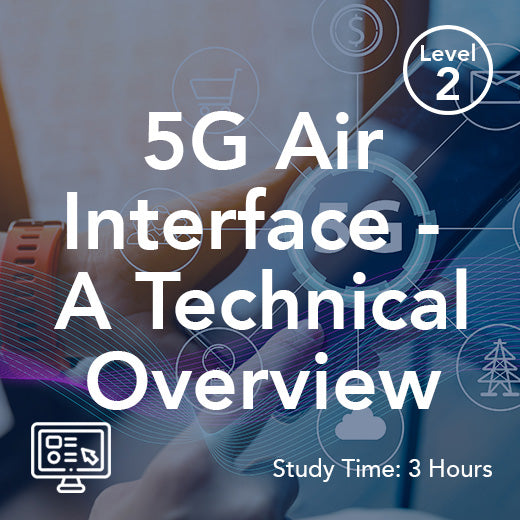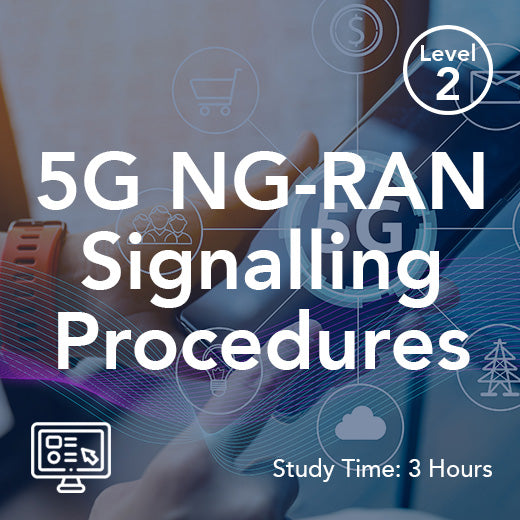Understanding Effective Radiated Power: A Simple Guide for Everyone
- , by Stephanie Burrell
- 17 min reading time
Effective radiated power, often abbreviated as ERP, is a key concept in the field of radio communications that impacts how signals are transmitted and received. It refers to the amount of power that a radio transmitter emits, adjusted for any gain from antennas or transmission lines. Understanding this concept is essential for anyone interested in how radio waves work, whether you're a hobbyist tinkering with amateur radios or a professional in telecommunications. In this guide, we will break down the basics of effective radiated power, explain its significance, and provide practical examples to help you grasp its applications in everyday technology. Join us as we explore this fundamental aspect of radio transmission with clarity and confidence.
Introduction to Antenna Power
What is Antenna Power?
Antenna power, often referred to as effective radiated power (ERP), is the measure of how much power an antenna radiates in a specific direction. This concept is central to understanding how radio signals are transmitted and received in various communication systems. Antenna power is calculated by taking the input power delivered to the antenna and multiplying it by the antenna gain. The antenna gain represents how much more power is radiated in a given direction compared to a reference antenna, typically a half wave dipole antenna. This ratio helps engineers and technicians determine how efficiently an antenna can focus energy in a particular direction, which is essential for maximizing signal strength and coverage. By understanding antenna power, professionals in radio, telecommunications, and broadcasting can design systems that deliver reliable and effective communication, ensuring that signals reach their intended destinations with minimal loss. Whether you’re working with a simple dipole or a more complex antenna array, knowing how to calculate and optimize antenna power is key to achieving the best possible performance.
Why It Matters in Communication Systems
Antenna power plays a vital role in the effectiveness of communication systems because it directly influences the strength and reach of a radio signal. When an antenna radiates more power, the resulting signal strength increases, allowing the signal to travel farther and maintain quality even in challenging environments. This is especially important in broadcasting, where strong antenna power ensures that radio and television signals reach the intended audience without being disrupted by interference. In telecommunications, optimizing antenna power is crucial for providing consistent and high-quality connectivity, particularly in areas with dense populations or difficult terrain. By carefully managing antenna power, engineers can achieve broader signal coverage, reduce the risk of dropped signals, and minimize interference from other systems. Ultimately, understanding and optimizing antenna power enables communication systems to achieve greater reliability, efficiency, and performance, benefiting both service providers and end users.
What is Effective Radiated Power?
Basic Definition and Importance
Effective radiated power (ERP) is a measure of the power radiated from an antenna, taking into account the gain of the antenna relative to a standard dipole. It’s expressed in watts and helps determine how far a radio signal can travel and how well it will be received. Understanding ERP is crucial because it influences the design and placement of antennas in everything from cell towers to home Wi-Fi networks. ERP depends on the antenna's ability to concentrate and direct electromagnetic power in a specific direction, which directly affects the effective radiated power. By knowing the ERP, engineers can optimize signal strength and coverage, ensuring that communication systems function efficiently. ERP is the result of the combination of transmitter power and antenna gain, which together determine the overall signal strength in a given direction. For hobbyists and professionals alike, grasping ERP provides insight into the effectiveness of their radio setups and helps in troubleshooting issues related to weak signals or interference. Thus, ERP plays a vital role in both the performance and reliability of radio communication systems, making it an essential concept for anyone working with or interested in radio technologies.
How It Differs from Other Power Metrics
Effective radiated power (ERP) is often confused with other power metrics like transmitter power output (TPO) and effective isotropic radiated power (EIRP). While all these metrics relate to radio transmission, they have distinct definitions and applications. TPO refers to the raw power emitted by a transmitter without accounting for any gain or loss from the antenna system. In contrast, ERP considers the gain provided by a directional antenna, measured against a standard dipole antenna. This makes ERP a more practical measure of how effectively a signal is being radiated in a particular direction. On the other hand, EIRP uses an isotropic radiator as a reference, which radiates power uniformly in all directions. An isotropic antenna is an idealized reference that radiates equal power in every direction, serving as the basis for EIRP calculations. EIRP generally results in higher values than ERP due to this difference in reference. Understanding these distinctions is crucial for accurately assessing and optimizing the performance of radio communication systems.
Everyday Examples of ERP
Effective radiated power (ERP) is a vital concept in many everyday technologies, even if we're not always aware of it. Consider the cell towers that provide your mobile phone with signal coverage. Each tower is equipped with antennas designed to maximize ERP, ensuring strong, reliable signals over large areas. Similarly, ERP is crucial in broadcasting radio and television signals. Broadcasters use ERP to determine how far their signals can travel and to ensure they reach their intended audience without interference. Even in domestic settings, ERP plays a role. For example, wireless routers in homes and offices must have adequate ERP to cover desired areas with a strong Wi-Fi signal. Understanding ERP can help users choose the right equipment or adjust settings for optimal performance. By grasping how ERP functions in these everyday contexts, we gain insight into the unseen mechanics of our connected world.
Understanding Output Power
Output power, also known as transmitter power, is the amount of power produced by a radio transmitter before it is sent to the antenna. This value, typically measured in watts, serves as the starting point for determining the effective radiated power (ERP) of a system. Output power is a critical factor because it represents the initial energy available to be radiated as a radio signal. When calculating ERP, the output power is combined with the antenna gain to determine how much power is effectively radiated in a specific direction. This process helps ensure that the signal is strong enough to reach the intended receiver, whether it’s for broadcasting, telecommunications, or wireless networking. Additionally, the concept of effective isotropic radiated power (EIRP) builds on output power by considering how the antenna would radiate power if it were an ideal isotropic radiator, providing a useful comparison for system performance. Understanding output power allows engineers to design systems that deliver the right amount of signal strength, optimize coverage, and comply with regulatory requirements. By accurately measuring and managing output power, communication systems can achieve reliable operation and high-quality signal transmission.
Calculating Effective Radiated Power
Key Components in the Calculation
Calculating effective radiated power (ERP) involves several key components that ensure accurate measurement of a transmitter’s capabilities. The primary elements include the transmitter power output (TPO), antenna gain, and any losses that occur in the transmission line between the transmitter and the antenna. First, the TPO is measured, representing the initial power generated by the transmitter. Next, the antenna gain, typically expressed in decibels relative to a dipole (dBd), is factored in. The gain and radiation pattern of the actual antenna directly impact the ERP calculation, as they determine how efficiently the antenna radiates power in a specific direction. This gain indicates how much the antenna amplifies the signal in a specific direction. However, power can be lost through the transmission line due to resistance and inefficiencies, and connectors and other system components can also contribute to overall power losses, which must also be accounted for in the calculation. By combining these components—adding the antenna gain to the TPO and subtracting line losses—we arrive at the ERP value. This comprehensive approach ensures that the ERP accurately reflects the power radiated in the intended direction.
Step-by-Step Calculation Process
To calculate effective radiated power (ERP) step-by-step, follow these straightforward steps. Begin by identifying the transmitter power output (TPO), measured in watts. Next, determine the antenna gain, which is often given in decibels relative to a dipole (dBd). This gain reflects how well the antenna directs the signal compared to an ideal dipole antenna. Then, calculate any losses in the transmission line, typically expressed in decibels (dB). These losses can be due to factors like cable resistance or connector inefficiencies. To find the ERP, convert the TPO to decibels (dBW), add the antenna gain, and subtract the transmission line losses. The formula looks like this: ERP (dBW) = TPO (dBW) + Antenna Gain (dBd) - Line Losses (dB). Finally, convert the result back to watts if necessary. This process provides a precise ERP value, essential for evaluating the performance of radio systems and ensuring optimal signal propagation.
Common Mistakes to Avoid
When calculating effective radiated power (ERP), several common mistakes can lead to inaccurate results. One frequent error is neglecting to convert all measurements to compatible units, such as failing to convert watts to decibels (dBW) or vice versa. This oversight can skew the final ERP calculation. Another mistake is overlooking transmission line losses, which can significantly affect the ERP if not accurately accounted for. Similarly, assuming antenna gain figures are in dBd when they are actually in dBi (decibels relative to an isotropic radiator) can result in miscalculations, as dBi values are typically higher than dBd. Additionally, not considering environmental factors, such as temperature or weather conditions, can also impact signal strength and should be factored into the calculation where possible. By being aware of these potential pitfalls and ensuring careful attention to detail, one can achieve a more accurate and reliable ERP measurement, optimizing communication system performance.
Applications of Effective Radiated Power
ERP in Broadcasting
Effective radiated power (ERP) is a critical factor in broadcasting, influencing how radio and television signals reach audiences. Broadcasters rely on ERP to determine the ideal power levels needed for their signals to travel over desired distances without interference. This ensures that content is delivered clearly and consistently, whether it's a local radio station or a national television network. By optimizing ERP, broadcasters can enhance signal coverage, minimize dead zones, and reduce interference from other transmitters. Additionally, regulatory bodies often set ERP limits to prevent interference and ensure fair access to the airwaves. For example, in densely populated urban areas, lower ERP might be necessary to avoid signal overlap, while rural areas might require higher ERP to cover larger distances. Understanding ERP allows broadcasters to effectively manage their transmission power, ensuring high-quality service for viewers and listeners while adhering to regulatory standards.
Role in Telecommunications
In telecommunications, effective radiated power (ERP) plays a vital role in ensuring efficient communication and robust network coverage. ERP helps determine the optimal power levels needed for cellular towers to provide consistent and reliable connectivity across vast areas. By carefully calculating ERP, telecom companies can design networks that minimize dead zones and enhance service quality for users. This is particularly important in densely populated areas where signal interference is a concern, as well as in rural regions where signals need to cover longer distances. Additionally, ERP is crucial when deploying technologies such as 5G, which require precise power management to support high-speed data transfer and low latency. Regulatory compliance is another critical aspect, as telecom operators must adhere to ERP limits set by governmental authorities to prevent interference with other services. Understanding and optimizing ERP ensures that telecommunications networks operate efficiently, meeting user demands and maintaining high performance standards.
Impact on Signal Strength
Effective radiated power (ERP) directly influences signal strength, which is crucial for clear and reliable communication. A higher ERP means a stronger signal that can cover greater distances and penetrate obstacles like buildings or natural terrain more effectively. This is essential for various applications, from broadcasting to telecommunications, where consistent and strong signals are paramount. For instance, in urban environments with many physical barriers, higher ERP helps ensure that signals maintain their integrity and reach intended devices without significant degradation. Conversely, in rural areas, a strong ERP extends the coverage area, reducing the need for multiple transmission sites. However, it's important to balance ERP to avoid excessive interference with other signals and comply with regulatory constraints. By understanding and optimizing ERP, engineers can enhance signal strength, improve coverage, and ensure that communication systems deliver high-quality performance across diverse environments.
Factors Affecting Effective Radiated Power
Environmental Influences
Environmental factors significantly impact effective radiated power (ERP) and, consequently, signal quality. Weather conditions such as rain, snow, and fog can absorb or scatter radio waves, diminishing signal strength and reducing coverage area. Vegetation, like dense forests or urban greenery, can also obstruct or absorb radio signals, leading to weaker transmission. Additionally, topographical features such as hills, mountains, and valleys can create physical barriers that block or reflect signals, causing coverage gaps and signal degradation. Urban environments pose unique challenges with buildings and other structures that can reflect or absorb signals, leading to multipath interference where signals take multiple paths to reach the receiver. Seasonal changes, such as foliage density or atmospheric conditions, can further influence ERP. Understanding these environmental influences allows engineers to design more resilient communication systems, employing strategies like higher ERP, strategic antenna placement, and adaptive technologies to mitigate adverse effects and ensure reliable signal transmission.
Equipment and Setup Considerations
The equipment and setup used in a radio communication system significantly affect effective radiated power (ERP). The choice of antenna, for instance, is crucial; different antennas offer varying degrees of gain, which directly influences ERP. Antennas with higher gain can radiate more power in a specific direction, enhancing signal strength and coverage. The type and quality of transmission lines also play a vital role, as signal losses can occur due to resistance and inefficiencies. Using high-quality, low-loss cables helps maintain the integrity of the transmitted power. Additionally, the positioning and orientation of the antenna are critical considerations. Proper alignment ensures that the maximum amount of power is radiated in the desired direction, reducing the chances of signal loss or interference. Lastly, the transmitter itself must be capable of delivering consistent power output. Regular maintenance and calibration of equipment can help achieve optimal ERP, ensuring effective and reliable communication.
Regulatory Standards and Compliance
Regulatory standards and compliance are crucial factors influencing effective radiated power (ERP) and its implementation in radio communication systems. Governments and international bodies, such as the Federal Communications Commission (FCC) or the International Telecommunication Union (ITU), establish rules to manage spectrum use and prevent interference between different services. These regulations often set limits on ERP to ensure fair access and efficient use of the radio spectrum. Compliance with these standards is mandatory, as exceeding ERP limits can result in penalties or legal consequences. Additionally, regulatory frameworks often dictate specific frequency bands for various applications, further impacting ERP calculations. Understanding and adhering to these standards ensures that communication systems operate legally and efficiently. It also helps in maintaining harmonious coexistence among different radio services, minimizing interference. For engineers and operators, staying informed about regulatory changes and requirements is essential to optimize ERP and ensure that systems remain compliant.
Future Trends in Effective Radiated Power
Technological advancements are set to significantly influence the future of effective radiated power (ERP) in radio communications. Improvements in electronics are enabling more precise control over transmitter and antenna systems, allowing for better management of signal generation, modulation, and transmission. Innovations in antenna design are leading to more efficient and compact antennas with higher gain, enhancing ERP without increasing transmitter power. The development of smart antennas, which can dynamically adjust their patterns to optimize signal strength and minimize interference, is particularly promising. Additionally, advancements in materials technology are producing transmission lines with lower losses, allowing more efficient power transfer from transmitter to antenna. Digital signal processing techniques continue to evolve, enabling more precise control over power levels and improving the overall performance of communication systems. Furthermore, as the demand for wireless connectivity grows, emerging technologies like 5G and beyond will push the boundaries of ERP, requiring novel solutions to manage power and spectrum use efficiently. Future trends in power management will focus on optimizing both the total power output of transmitters and the total power radiated by antennas to maximize efficiency and performance. These advancements promise to enhance the capability, reliability, and efficiency of radio communication systems in the future.
Challenges and Opportunities
As we look to the future of effective radiated power (ERP), several challenges and opportunities emerge. On the challenges front, the increasing demand for wireless services intensifies spectrum congestion, making it harder to manage interference and maintain signal quality. Regulatory constraints will become more stringent, requiring innovative solutions to optimize ERP within set limits. Additionally, the rollout of new technologies like 5G and the Internet of Things (IoT) presents challenges in designing systems that can efficiently manage power across diverse applications and environments. However, these challenges also offer opportunities. The push for more efficient power management is driving research into advanced materials and technologies, such as beamforming and adaptive antennas, which promise greater control over ERP. Furthermore, the integration of artificial intelligence and machine learning into communication systems offers the potential to dynamically optimize ERP based on real-time conditions, enhancing performance and efficiency. Navigating these challenges will be key to unlocking new opportunities in radio communications.
Predictions for Industry Changes
In the coming years, the industry surrounding effective radiated power (ERP) is poised for substantial changes. As technology continues to advance, we can expect a shift towards more efficient and adaptive ERP management systems. The proliferation of 5G networks will demand more sophisticated approaches to power management, pushing the industry towards the development of smart antennas and beamforming technologies that can dynamically adjust ERP to optimize coverage and reduce interference. Moreover, with the anticipated expansion of the Internet of Things (IoT), there will be a need for more granular control over ERP to support a vast number of connected devices with varying power requirements. Regulatory frameworks will likely evolve to accommodate these technological advancements, requiring industries to stay agile and compliant. Overall, these changes will drive improvements in system efficiency and connectivity, fostering a more connected world while addressing the challenges posed by increased spectrum demand and environmental considerations.


































